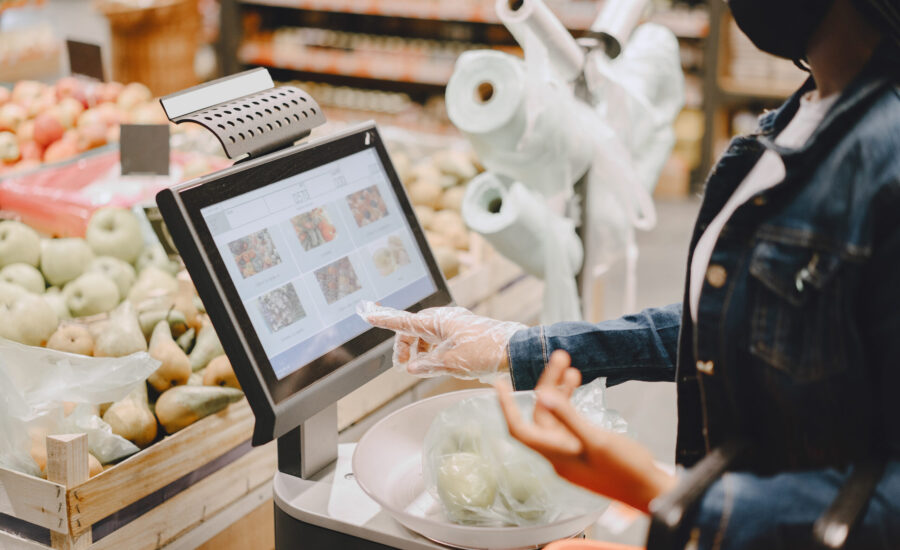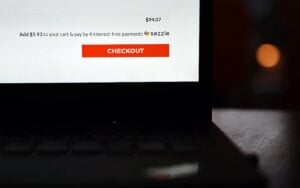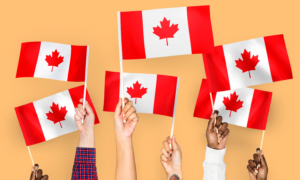Likewise, Interac’s contactless payment popularity is on the rise. The growth of Interac Flash use (as a percentage of total Interac Debit transactions) has almost doubled the normal growth rate in the pre-COVID period of November to March, with June seeing a 9 % increase compared to March of this year, even though the Interac tap limit remained at $100.
What are the risks for consumers?
Both Moneris and Interac assure there is no risk to either consumers or vendors with this new increase in contactless payment limits. “Merchants and consumers are not held liable for any fraud,” says Diab. For contactless credit card payments, the liability is on the credit card issuer.
Let’s say you have a Visa credit card from RBC. In the event of a fraudulent transaction, neither you, the consumer, nor the merchant where the fraudulent transaction was made would be out of pocket. Instead, the issuer—in this theoretical case, RBC—would assume liability.
Interac’s debit cards have a lower tap-to-pay limit at $100. There’s a cumulative dollar amount limit for consecutive transactions, typically of $200, that is set by the issuing bank or credit union, says Henin. “When a transaction is above either limit, the user is prompted to restart the limit with a chip-and-PIN transaction, which confirms that the user is the authorized cardholder.” Interac also has a zero liability policy, where cardholders will be reimbursed 100% for fraudulent transactions.
These limits offer protection against theft and fraud, and there are other security measures like EMV technology, a global standard that uses computer chips to authenticate (and secure) chip-card transactions.
While the volume of Interac debit transactions is growing, card fraud losses remain at record low levels, the company says. For example, in 2019, total Interac debit fraud losses as a result of skimming (a type of fraud where a gadget installed at an ATM or disguised as a point-of-sale terminal at a retailer copies your card’s magnetic strip and PIN), were $2.4 million, a decrease of 45% compared to 2018. According to Interac, this decline is a result of the industry’s investment in security features such as EMV-based secure chip processing, which protects against skimming, counterfeiting and electronic pickpocketing. Additionally, Interac works collaboratively with financial institutions, merchants and law enforcement in fraud prevention efforts.(Moneris says it does not have access to credit card fraud numbers as it is the individual card issuers that take on liability for contactless payments.)
“Contactless transactions are considered more secure because they are card-present transactions—meaning, the owner of the card should be present when using it—compared to non-card-present transactions like giving a credit card number over the phone,” says Diab.
You don’t need to worry about gadgets that people can press near you to create a transaction from your wallet, nor should you bother with RFID envelopes or wallet products. That’s not only because strangers generally aren’t getting as close to each other as in the past with new social distancing guidelines, but also because with current security standards used by tap-enabled cards and digital wallets, RFID skimming isn’t an effective fraud method, according to Moneris.











The limit on Costco’s Capital One credit card was raised to $400 at least a year ago.
They do check your photo on the back when you show your card, though.
Hi,
I’d urge the writer of this article to review articles posted online dating back as far as 2017 on how Digital Wallets continue to get hacked.
Everything is being hacked these days, and that also includes ‘secure’ password managers.
There is no reason to worry contactless payment solutions have been around for years. Consumers and merchants have been embracing contactless payments around the world. If you are looking for a reliable and secure payment platform for your business in Canada, SnapPay is the best option for you. SnapPay is a leading payment platform from Toronto. We offer payment solutions that allow merchants to accept Alipay digital payments in Toronto from Chinese consumers. You can learn more on our website https://www.snappay.ca
My chip stopped working on my Mastercard. It was the older style chip that had a bigger lump on the card than the replacement. Still worked when inserted for some reason. Guess it was the antenna not working. Anyways, soon as I started using the new tap and go on the new card someone on PlayStation was able to use my old card number and made 6 new transactions all in one day under $100. Mastercard was great and notified me within hours and reversed and blocked all charges when I enquired. Now I’m waiting for a new card… again. They said the thief was using a digital wallet with my old old original card, the one where the antenna was broken. HOW CAN THAT HAPPEN? They told me even though I cancelled my old card number the Digital Wallet would still work? I never used a smart phone or any digital wallet. I don’t even have a smart phone. I don’t believe in coincidence that some thief started using a digital wallet right after I used the new card the day before to make a purchase on eBay. eBay says they share no information on credit car purchases with anyone. I believe them but I also used the tap and go to buy gas, groceries and a local liquor store. I authorized the card by inserting it at the same gas station. That is how you authorize cards now, no phone in. Mastercard tells me now even the digital wallet is blocked. Is it normal or did Mastercard slip up on this? Shouldn’t digital wallets be deactivated when an old number is deactivated? Never mind I never used any digital wallet. Bet nobody has any clue here or anywhere what should happen.